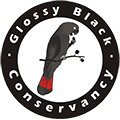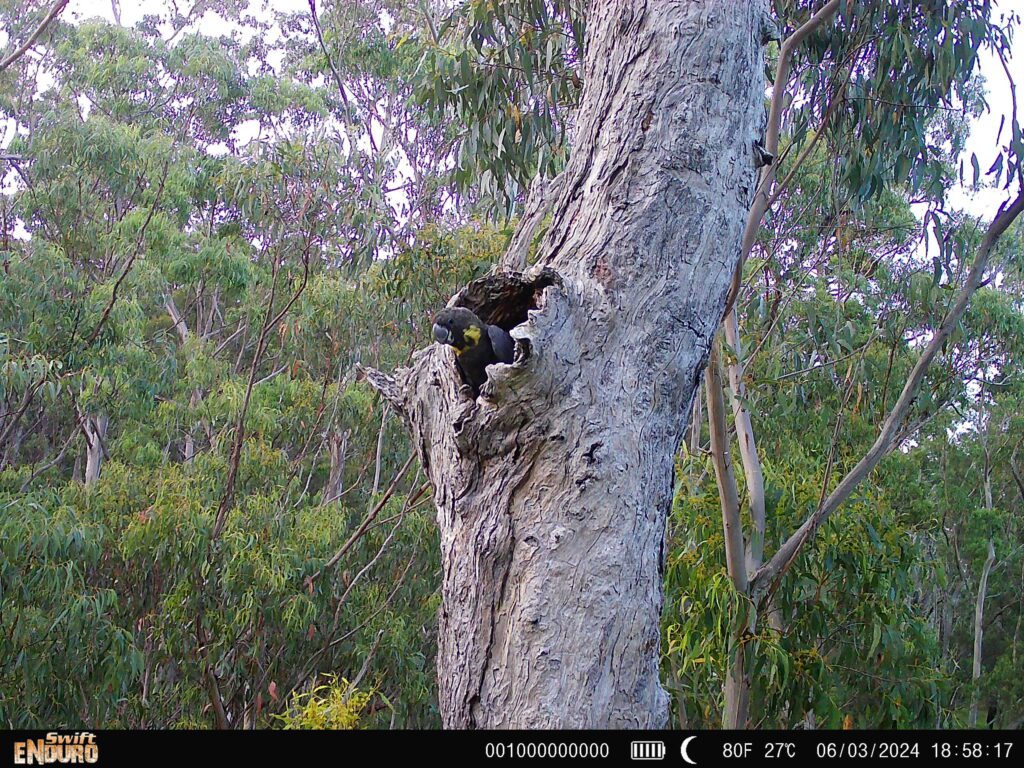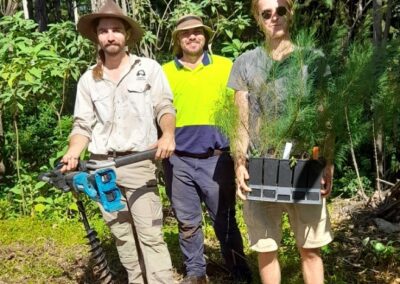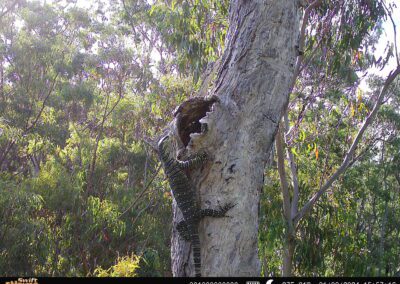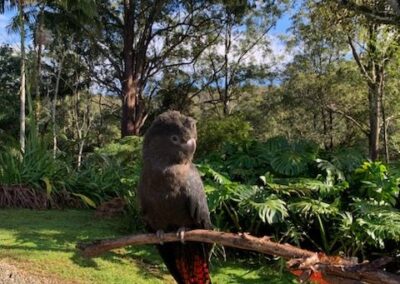Glossy Nest News: Local Knowledge and Citizen Science Drive Glossy Recovery
As Glossy Black-Cockatoo breeding season begins across the NSW north coast, the Biliirrgan Project is calling on local communities to help locate nesting sites. With the support of the Glossy Squad citizen science network, volunteers are gearing up to search for active nests—but local knowledge remains critical to success.
Reports of Glossy Black-Cockatoos drinking, flying regular evening routes, or females begging males for food can all be strong indicators of nearby nests. Community members are encouraged to record these observations using the Biliirrgan App or Birdata, and to follow up with an email to project staff if they suspect nesting activity nearby.
Since winter 2023, Glossy Squad volunteers have identified nine nests across the project area, spanning the Nambucca, Bellingen, Coffs and Clarence LGAs. In 2024 alone, four new nests were located in Dundurrabin, Brierfield and Darkwood, with monitoring suggesting all four successfully fledged chicks. The Darkwood chick was blown to the ground in a storm and found by local residents, who helped it dry out on a stick. Once dry, it rejoined its parents.
Not all outcomes have been positive. A nest camera at Dundurrabin revealed a goanna predation event in March 2024, and a 2023 nest in Sawtell failed for unknown reasons. However, the nests have so far produced a total of eight successful fledglings, with more likely undiscovered.
Meanwhile, restoration efforts are thriving. Local groups including Clarence Environment Centre, Clarence Landcare, Coffs Harbour Regional Landcare and Bellinger Landcare have propagated and planted thousands of Allocasuarina feed trees. Special mention goes to Victor Ostrowsky, who has contributed over 3,000 trees.
The Glossy Squad Clarence Valley team has launched a Facebook page and group, sharing updates and presentations from last year’s National Glossy Forum.
Looking ahead, nest box designs are being refined with local landholders, and installations are planned for 2025. To better understand Glossy breeding success, the team hopes to find and monitor at least 30 nests in coming seasons.
Anyone with relevant sightings or information is urged to contribute through the Biliirrgan App or Birdata—and help secure the future of this remarkable species.
